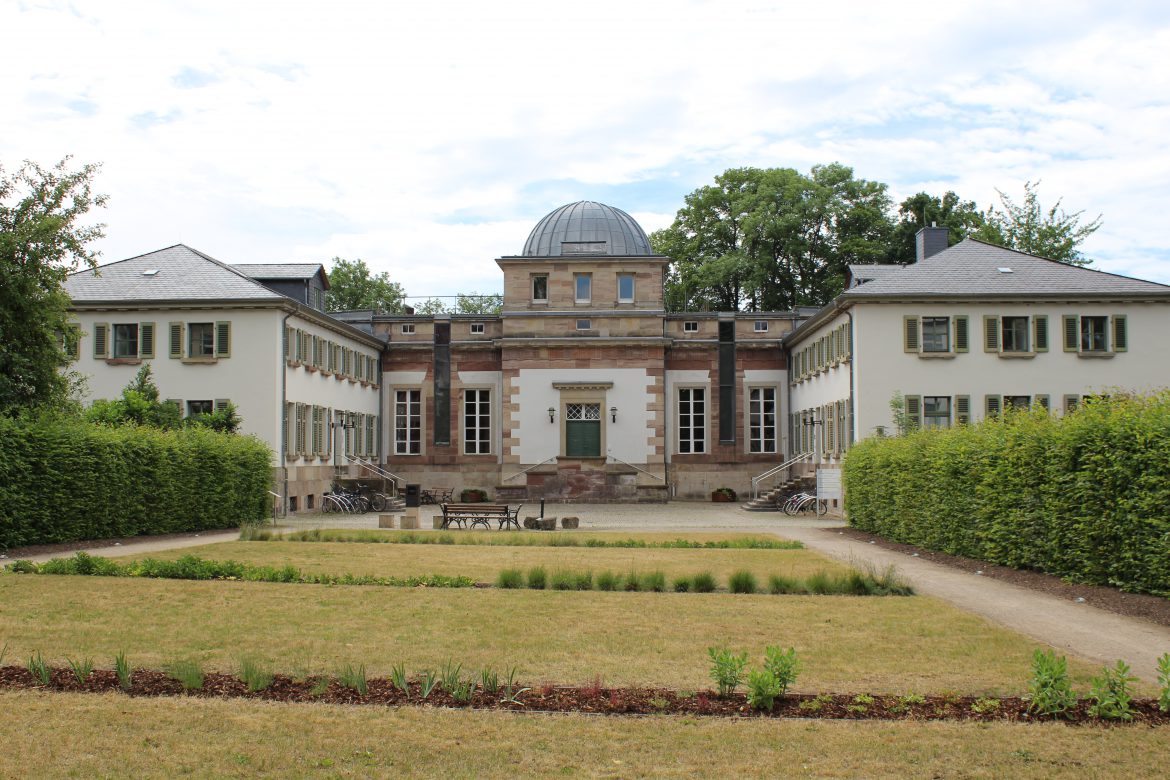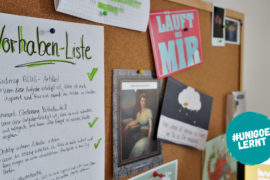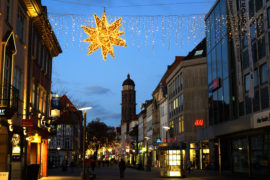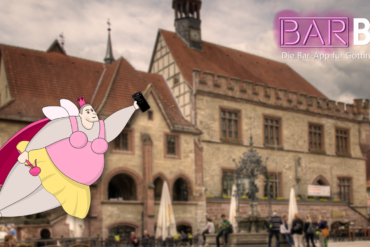Inventing the electromagnetic telegraph, proving the constructability of a heptadecagon, defining and giving his name to the Gaussian distribution, coverboy of the former German currency – the list of his achievements is more than impressive. Carl Friedrich Gauß was a groundbreaking scientist and one of the most well-known alumni of the University of Göttingen (fyi: The university is still in possession of his brain, seriously). So there are many reasons to get out on the streets of Göttingen and follow his footsteps.
The history of Carl Friedrich Gauß in Göttingen is long. But where did it begin? Not at the Institute of Mathematics, not at the Observatory, but at the C&A store on Weender Straße. 18 year old Gauß lived in a predecessor of the C&A building when he first took up his studies at the newly founded University.
Born into rather poor conditions in 1777 in Brunswick, Gauß was only able to attend Göttingen University with the help of noble sponsors. From his very first moment at the University, he was smitten by Göttingen’s library. In a letter to Eberhart von Zimmermann, his professor in Brunswick, Gauß wrote: “I saw the library and I promise myself a considerable contribution to my happy existence in Göttingen from it.” His first library loan had nothing to do with a scientific treatise, though. Simon Richardson’s ‘Clarissa’, a popular novelette at that time, was the first book of his choice.
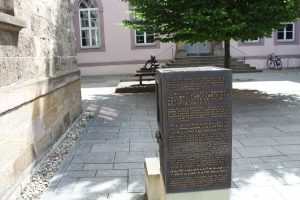
Right there, between the historic library building of the SUB and the Paulinerkirche, we can find an artwork that reminds us one of Gauß’ biggest achievements: A block of bronze engraved with a sentence translated into 25 languages. “Just quickly call home to tell that you are the very place where they conducted the first electromagnetic telecommunication and that you tried it yourself and realized how inconvenient it had been” is the sentence of the artists choice (short and straightforward without any unnecessary details). It marks the starting point of the first electromagnetic telegraph line. The counterpart to the bronze block stands at the other end of the line: Gauß’ observatory, the “Neue Sternwarte”.
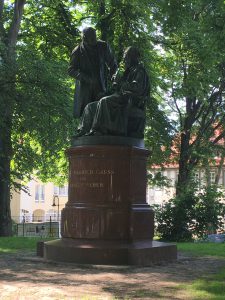
It 1833, Gauß and his colleague Wilhelm Weber spanned copper lines through Göttingen’s city center. From the Paulinerkirche to the Observatory. It took four and a half minutes for the first long distance data transfer to arrive at its destination. „Wissen vor meinen, meinen vor scheinen“ (“Knowing before reckoning, reckoning before appearing“) was the first message Gauß and Weber sent each other using their own kind of Morse alphabet. In honour of the two scientists, we can find another memorial in the city center: The Gauß-Weber-Memorial on the “Wall”, Göttingen’s former city wall. And there is another one: The youngest homage to Weber and Gauß becomes visible as soon as it gets dark in the city. That’s when we can see a green laser beam coming from the direction of the Observatory being projected onto the Johanniskirche. For all the decoding enthusiasts among you: this laser beam is a very special treat – it transmits changing messages into the night sky, encoded by Gauß/Weber’s own telegraph alphabet.
In 1807, though, telecommunication was still a long way to go for Gauß. He was a professor for astronomy at the University and moved into his first own flat on Düstere Straße, together with his wife Johanna Ostoff. Later, he and his family moved to a house on Kurze Straße. Nowadays, this part of town is the cradle for the soon-to-be-established arts quater “KuQua”. Back then, it wasn’t by far a suitable place for a professor to reside.
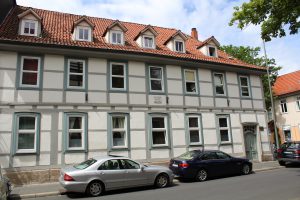
Gauß, however, didn’t seem to care. He didn’t chose his domicile based on prestige, but rather on its proximity to the observatory, which was built especially for him (“Neue Sternwarte”). From 1816 onwards, Gauß lived and worked in the Observatory, which in the 19th century was situated far away from university life.
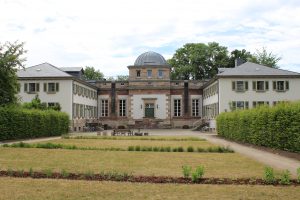
It’s only a short walk from there to Gauß’ final resting place. Gauß died in 1855 at the age of 77. His gravestone can still be visited in Cheltenham Park. It’s the last tangible trace this exceptional scientist left in Göttingen. His innovations and discoveries, nevertheless, are surviving in scientific research all around the globe.

